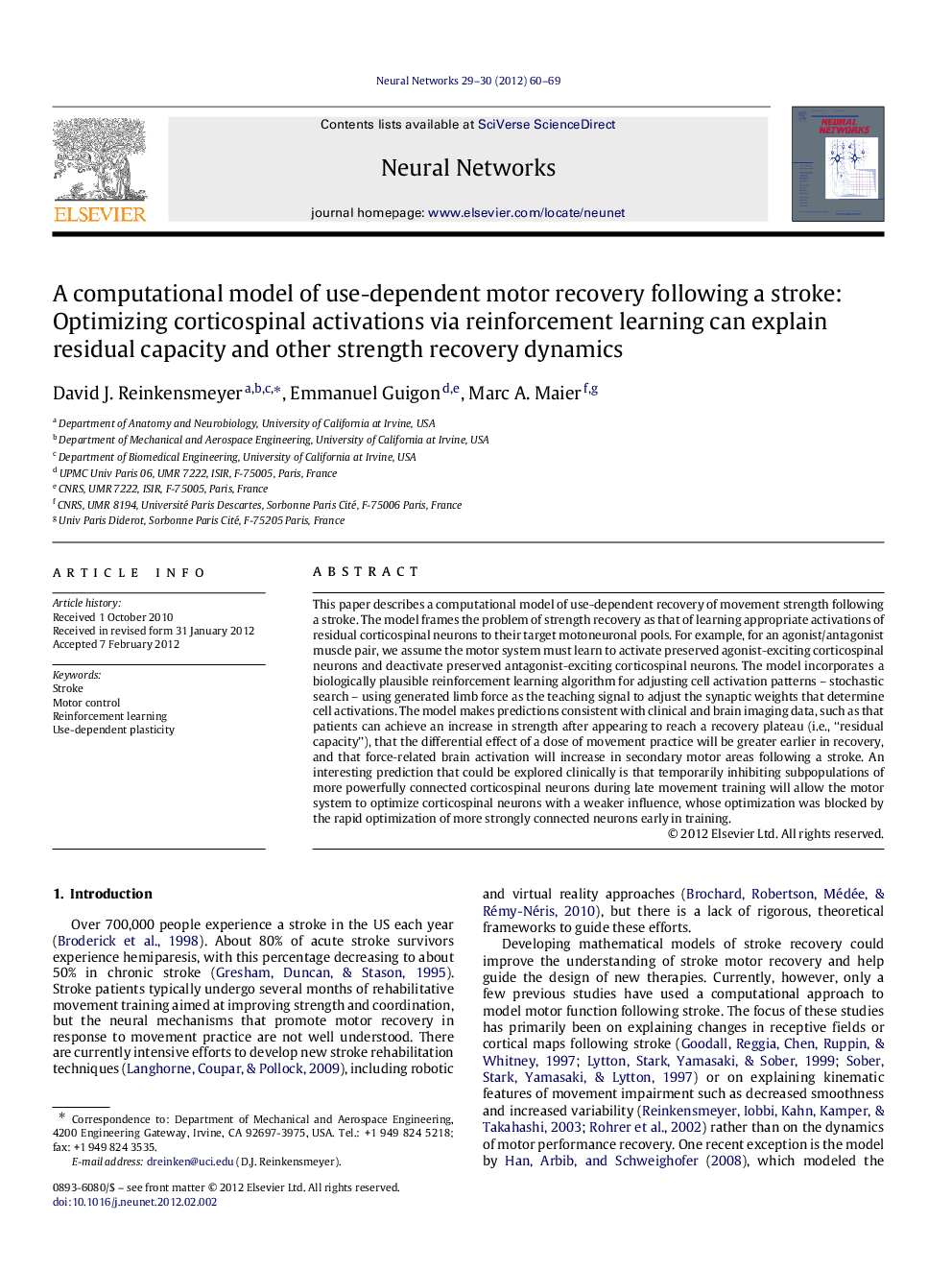| Article ID | Journal | Published Year | Pages | File Type |
|---|---|---|---|---|
| 404265 | Neural Networks | 2012 | 10 Pages |
This paper describes a computational model of use-dependent recovery of movement strength following a stroke. The model frames the problem of strength recovery as that of learning appropriate activations of residual corticospinal neurons to their target motoneuronal pools. For example, for an agonist/antagonist muscle pair, we assume the motor system must learn to activate preserved agonist-exciting corticospinal neurons and deactivate preserved antagonist-exciting corticospinal neurons. The model incorporates a biologically plausible reinforcement learning algorithm for adjusting cell activation patterns–stochastic search–using generated limb force as the teaching signal to adjust the synaptic weights that determine cell activations. The model makes predictions consistent with clinical and brain imaging data, such as that patients can achieve an increase in strength after appearing to reach a recovery plateau (i.e., “residual capacity”), that the differential effect of a dose of movement practice will be greater earlier in recovery, and that force-related brain activation will increase in secondary motor areas following a stroke. An interesting prediction that could be explored clinically is that temporarily inhibiting subpopulations of more powerfully connected corticospinal neurons during late movement training will allow the motor system to optimize corticospinal neurons with a weaker influence, whose optimization was blocked by the rapid optimization of more strongly connected neurons early in training.
